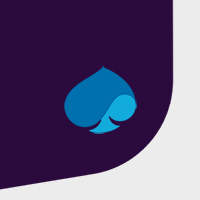Time to examine the RAG Status report!
We are going to listen in as an entrenched Senior Manager in a large corporation running multiple IT projects, is being shadowed by a Junior Manager. They have both been sent this weeks’ RAG status report that shows a RAG status for each project on a weekly basis.
Junior Manager (JM): “What’s this colour chart that’s arrived in my inbox?”
Senior Manager (SM): “It’s a management report in the form of a RAG status, each project is given a colour each week; Red, Amber or Green – R.A.G you see.”
JM: “Oh I see so its like a traffic-light system?”
SM: “That’s right, it’s a very efficient way to show the status of many projects in a single easy-to-read view.”
JM: “There is a lot of green. So I guess that’s good isn’t it?”
SM: “Yes green is good, so we don’t need to worry about those.”
JM: “And Red is bad, and Amber must be in-between….”, “I can see there are two Reds on here do we know why that is?”
SM: “No, its’s my job to ask, let me have a look” The SM casts his eye over the report and quickly spots the two Red status projects. “Oh, those two projects have been showing Red for ages, they have massively overrun and have hit all sorts of technical issues outside of their control, so everyone knows about those, so nothing to worry about”.
JM: “Ok – but if you are new to this you would have to ask each time…, and what about those five in-between Amber status projects, what are we doing with those?”
SM: “Some Project Managers are cautious naturally and they always report Amber until the last week or so when the project magically turns to Green which proves they are effective managers – it goes down well at the end of year review, so I don’t pay much attention to those”.
JM: (thinking out loud): “So we don’t need to look at the Green ones. We don’t need to look at the Amber ones, and we don’t need to look at the ones that are consistently Red, so, by a process of elimination, that only leaves the ones that have turned Red for the first time on this report that need to be looked at!”
SM: “In theory, of course you are right, but… in practice any Project Manager reporting a Red project is usually asked to leave…”
JM (indignant): “The Company can’t do that surely…”
SM: “They are all contractors so not a problem”
JM: “But what about those two Red status projects?”
SM: “Oh those two contract project managers got their marching orders weeks ago”
JM (after more thought): “So we don’t have anything to worry about then?”
SM: “Now you are getting the hang of it …!”
I hope we can agree here that something has gone wrong here and the RAG report has become almost valueless as a management tool and is surviving only as it is required as “part an audit”.
Let’s have a re-think!
However beautiful and well-constructed any RAG report is; it is a window on the past, a view looking through the rear-view mirror. What we really want to do is to use the RAG report to predict what will happen in the future and crucially, can we take an action now that will positively influence what happens next. I would content that if the RAG report does not contain information that is sufficiently reliable and consistent then it is am almost useless document.
There are two different but important factors to consider here.
- Consistency
- Action Planning
Consistency can be achieved by a clear set of guidelines that can be followed in a largely impartial manner. The more objective and measurable the criterium is the more impartial the RAG status will be. For example a criterium such as “Is the actual spend to date within 5% of planned spend to date? Is an objective measure. A criterium such as “Is the project on track?” is much more open to interpretation. If there is a culture of fear then there will be a natural bias towards concluding that the project is indeed “on-track” triggering a sea of Green.
The second aspect needed for consistency is an audit function that can check that the agreed guidelines are being followed, either as a fixed part of the regular process or on a sampling quality check basis.
If we can rely on our RAG colours we can consider the real added-value of Action Planning from a secure foundation.
Here is what typically happens.
Green projects – great! Move on.
Amber Project - umm may have to have a look at those later if I get time.
Red project – We swing into action with the following questions-
- What has gone wrong?
- Why has it gone wrong?
- Who is to blame?
- (and if we are honest) – How can I avoid any blame?
But: is this the best use of our limited time?
Let’s go back to our criterium
can we take an action now that will positively influence what happens next?
and construct a different more forward-thinking action plan by colour.
For Green-status Projects
Is there anything we can learn from this project that would help other projects stay green?
Are there any risks that could move this project to Amber at the next review point and if so what can be done now to lessen those risks?
Amber-status Projects
What actions can be taken now that will move the project to Green at some point in the future.
Are there any risks that could move this project to Red at a future review-point?
Red-status Projects
Are the reasons for the Red status understood?
Are there lessons that can be learnt for other projects to avoid going Red?
Is there a recovery plan? If not: one must be constructed, with concrete actions assigned to accountable people to agreed deadlines. Future status reports will then report against a revised plan avoiding an ever-red project, which can be missed through the familiarity of it being reported as red on every successive progress reports.
If we can guarantee consistency of reporting data we can start to use AI techniques within a Cognitive QA approach to guide us to where we should be looking rather than relying solely on our intuition and experience, which is a much more exciting prospect!
- Sogeti UKMake an enquiry
0330 588 8000
 Sogeti UKMake an enquiry
Sogeti UKMake an enquiry
0330 588 8000
- Phil LuptonAccount Director, Sogeti UK
+3305888221
 Phil LuptonAccount Director, Sogeti UK
Phil LuptonAccount Director, Sogeti UK
+3305888221



![[Missing text '/pageicons/altmail' for 'English']](/Static/img/email.png)